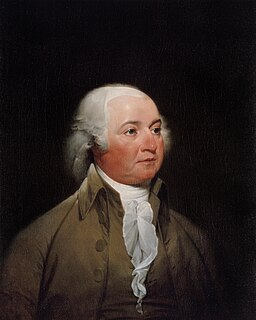
The 1796 United States presidential election was the third quadrennial presidential election. It was held from Friday, November 4 to Wednesday, December 7, 1796. It was the first contested American presidential election, the first presidential election in which political parties played a dominant role, and the only presidential election in which a president and vice president were elected from opposing tickets. Incumbent Vice President John Adams of the Federalist Party defeated former Secretary of State Thomas Jefferson of the Democratic-Republican Party.

Charles Brantley Aycock was the 50th governor of the U.S. state of North Carolina from 1901 to 1905. After starting his career as a lawyer and teacher, he became active in the Democratic Party during the party's Solid South period, and made his reputation as a prominent segregationist.

Locke Craig, an American lawyer and Democratic politician, was the 53rd governor of the U.S. state of North Carolina, serving from 1913 until 1917.
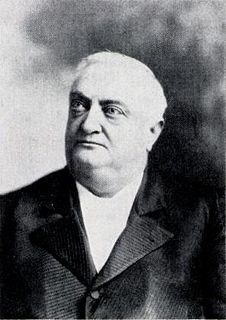
Daniel Lindsay Russell Jr. was the 49th Governor of North Carolina, serving from 1897 to 1901. An attorney, judge, and politician, he had also been elected as state representative and to the United States Congress, serving 1879–1881. Although he fought with the Confederacy during the Civil War, Russell and his father were both Unionists. After the war, Russell joined the Republican Party in North Carolina, which was an unusual affiliation for one of the planter class. In the postwar period he served as a state judge, as well as in the state and national legislatures.

Furnifold McLendel Simmons was a Democratic member of the United States House of Representatives from March 4, 1887 to March 4, 1889 and U.S. senator from the state of North Carolina between March 4, 1901 and March 4, 1931. He served as chairman of the powerful Committee on Finance from March 4, 1913 to March 4, 1919. He was an unsuccessful contender for the 1920 Democratic Party nomination for president. Simmons was a staunch segregationist and white supremacist, and a leading perpetrator of the Wilmington insurrection of 1898.

Cameron A. Morrison was an American politician and the 55th governor of the U.S. state of North Carolina from 1921 to 1925.

The Solid South or Southern bloc was the electoral voting bloc of the states of the Southern United States for issues that were regarded as particularly important to the interests of Democrats in those states. The Southern bloc existed especially between the end of Reconstruction in 1877 and the passage of the Civil Rights Act in 1964. During this period, the Democratic Party overwhelmingly controlled southern state legislatures, and most local, state and federal officeholders in the South were Democrats. During the late 1800s and early 1900s, Southern Democrats disenfranchised blacks in all Southern states, along with a few non-Southern states doing the same as well. This resulted essentially in a one-party system, in which a candidate's victory in Democratic primary elections was tantamount to election to the office itself. White primaries were another means that the Democrats used to consolidate their political power, excluding blacks from voting in primaries.

Alfred Moore Waddell was an American politician and white supremacist. A member of the Democratic Party, he served as a U.S. representative from North Carolina between 1871 and 1879 and as mayor of Wilmington, North Carolina from 1898 to 1906.

The Wilmington insurrection of 1898, also known as the Wilmington massacre of 1898 or the Wilmington coup of 1898, was a coup d'état and massacre carried out by white supremacists in Wilmington, North Carolina, United States, on Thursday, November 10, 1898. The white press in Wilmington originally described the event as a race riot caused by black people. Since the late 20th century and further study, the event has been characterized as a violent overthrow of a duly elected government by a group of white supremacists. It is the only such incident in the history of the United States.
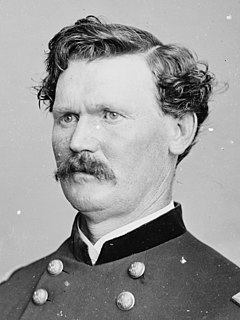
The 1868 South Carolina gubernatorial election was held for three days from April 14 to April 16, 1868 to select the governor of South Carolina. The election for statewide offices was held simultaneously with the vote on the South Carolina Constitution of 1868. Robert Kingston Scott won the election largely by the support of the newly franchised black voters and became the 74th governor of South Carolina.
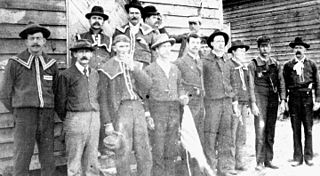
The Red Shirts or Redshirts of the Southern United States were white supremacist paramilitary terrorist groups that were active in the late 19th century in the last years of, and after the end of, the Reconstruction era of the United States. Red Shirt groups originated in Mississippi in 1875, when anti-Reconstruction private terror units adopted red shirts to make themselves more visible and threatening to Southern Republicans, both whites and freedmen. Similar groups in the Carolinas also adopted red shirts.
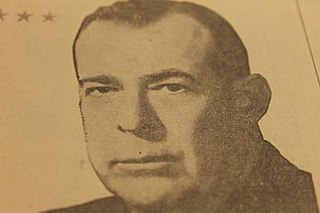
Clarence C. "Taddy" Aycock, a conservative Democrat from Franklin in St. Mary Parish, was the only three-term lieutenant governor in 20th century Louisiana history. He served from 1960 to 1972. Aycock failed in his only bid for governor in the 1971 Democratic primary. Few lieutenant governors in Louisiana have been elected directly to the governorship; former Governor Kathleen Babineaux Blanco of Lafayette, is a prominent exception.

Francis Donnell Winston was a North Carolina politician and judge who served as the tenth Lieutenant Governor of North Carolina from 1905 to 1909 under Governor Robert B. Glenn.

The 2008 United States elections were held on November 4. Democratic Senator Barack Obama of Illinois won the presidential election, by defeating his near rival John McCain and the Democrats bolstered their majority in both Houses of Congress.

The 2012 North Carolina gubernatorial election took place on November 6, 2012, concurrently with the 2012 United States presidential election, U.S. House election, statewide judicial election, Council of State election and various local elections.
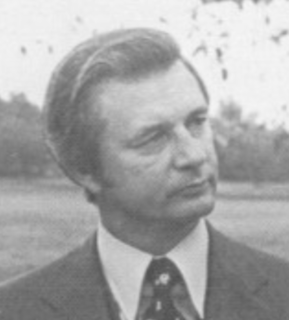
The 1980 North Carolina gubernatorial election was held on November 4, 1980. Despite North Carolina going to Ronald Reagan in the presidential race and the U.S. Senate race being won by a Republican, popular Democratic Governor Jim Hunt won a second term in office in a landslide over Republican I. Beverly Lake. Hunt thus became the first governor of the state elected to a consecutive four-year term, following an amendment to the Constitution of North Carolina allowing such a run.

The 1928 North Carolina gubernatorial election was held on November 6, 1928. Democratic nominee O. Max Gardner defeated Republican nominee Herbert F. Seawell, with just over 55% of the vote. This was, relatively, a close election for the time in North Carolina, with Gardner receiving the smallest percentage of the vote that any Democratic gubernatorial nominee won between 1900 and 1956. The result came against the backdrop of divisions in the state Democratic Party over the controversial nomination of Alfred E. Smith for president. Gardner supported Smith, who lost the state to Herbert Hoover.

The 1920 North Carolina gubernatorial election was held on November 2, 1920. Democratic nominee Cameron A. Morrison defeated Republican nominee John J. Parker with 57.2% of the vote. Both were attorneys in private practice at the time.

The 1904 North Carolina gubernatorial election was held on November 8, 1904. Democratic nominee Robert Broadnax Glenn defeated Republican nominee Charles J. Harris with 61.72% of the vote. At the time, Glenn was an attorney and former member of the state Senate, while Harris was a businessman and former member of the United States Industrial Commission.

The 1896 North Carolina gubernatorial election was held on November 3, 1896. Republican nominee Daniel Lindsay Russell defeated Democratic nominee Cyrus B. Watson with 46.52% of the vote. This was the only election in North Carolina between 1872 and 1972 in which the Republican nominee won the governor's office.



















